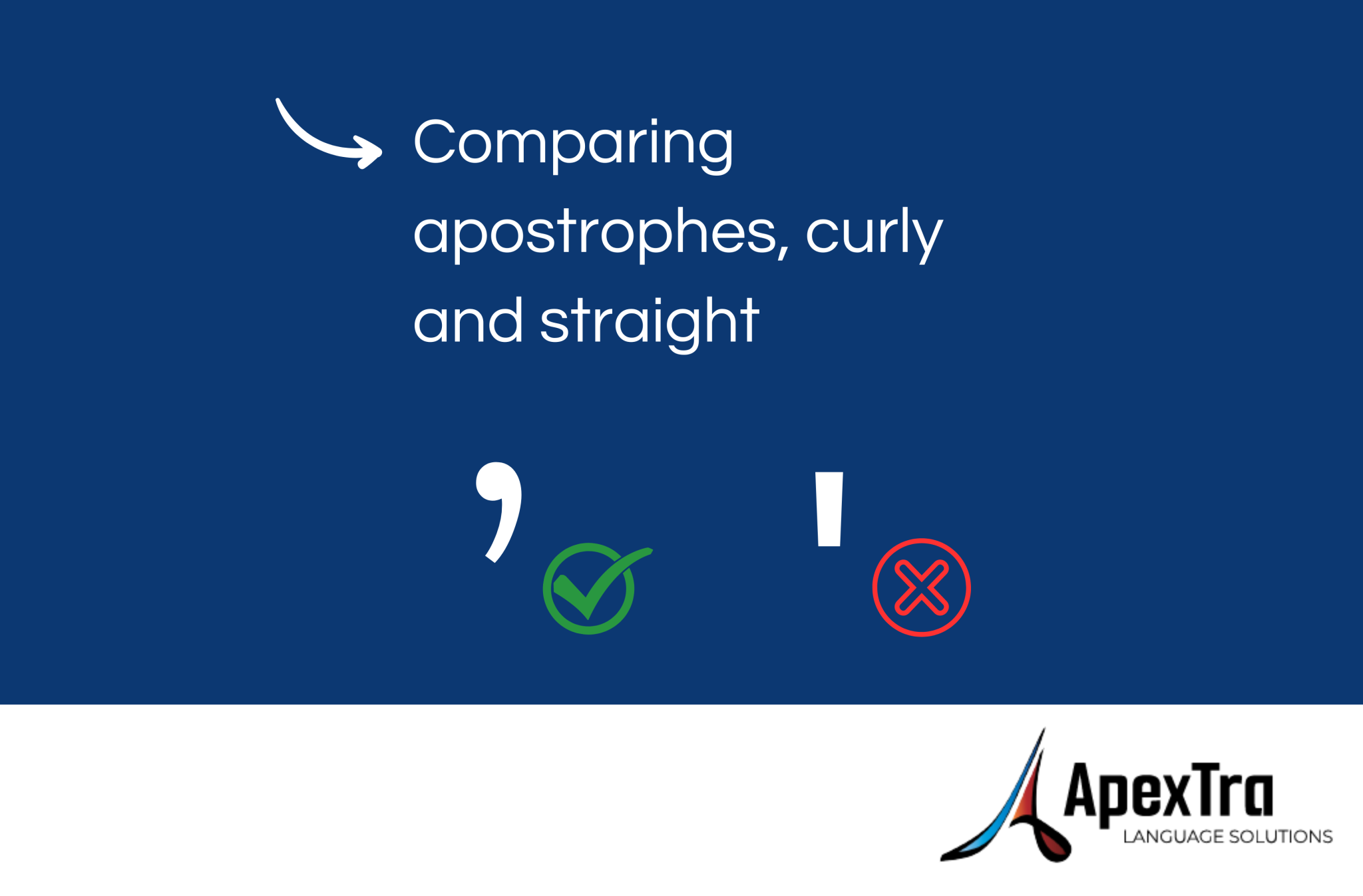
Translation, the pillar of global communication, goes far beyond mere words. In this world of words, even the smallest typographic details, such as apostrophes, play a crucial role in preserving linguistic consistency.
Apostrophes: curly or straight
Apostrophes, those little signs that are often overlooked, come in two distinct forms: curly and straight. What’s the difference, you might ask?
- The curly apostrophe, also known as typographic is similar to a comma. This is the typographically correct version of the apostrophe, the one we are supposed to use when writing.
- The straight apostrophe, also called typewritten looks like a straight line. This is the apostrophe you will see on your keyboard.
What this means in today’s digital world: we use the wrong apostrophe most of the time, without even knowing it. But why is the wrong version on our keyboards?
The answer lies in the ancestor of our computers: the typewriter. Originally from the English-speaking world, its creator decided to replace the traditional curly apostrophe with this straight apostrophe, to save space on the keyboard and make it a multifunctional character, which can be used to open and close quotation marks, for example. Since then, the bad habit has stuck, and we continue to use this “impostrophe.”
Consequences of negligence
Typographic accuracy is crucial to the quality of a translation. Neglecting these differences can have surprising consequences, as clumsy translations can alter the very meaning of messages.
The translator’s role
The translator, a true linguistic craftsman, juggles these subtleties. Their role is not simply to transpose words from one language to another, but to maintain consistency, even in the smallest details. As such, a translator’s role is also to be mindful of these minute details, to ensure work of the highest quality.
What’s the best way to preserve the traditional comma?
The English language is full of apostrophes, so you might as well use the right ones! What’s more, the curly apostrophe is easier to read, and blends in better with texts.
Unfortunately, most texts today use straight apostrophes. This is also the case for many of the texts we receive from our customers. Here are a few solutions we can adopt to make our texts more coherent:
- To place the curly apostrophe, simply use the shortcut alt + 0146
- For Mac users, use the shortcut cmd + ‘.
- You can also use the “Find and replace” function, which comes in handy when you need to change all the apostrophes in a text.
- Finally, in the parameters, you can replace the assignment of the ‘ key with the curly apostrophe.
So let’s remember that every comma, every apostrophe, contributes to the symphony of global communication. Recognizing the detailed work of translators, guardians of linguistic coherence, means embracing the rich cultural diversity that weaves our world.
At ApexTra, you entrust your translations to experts who know the difference when it comes to these important details.